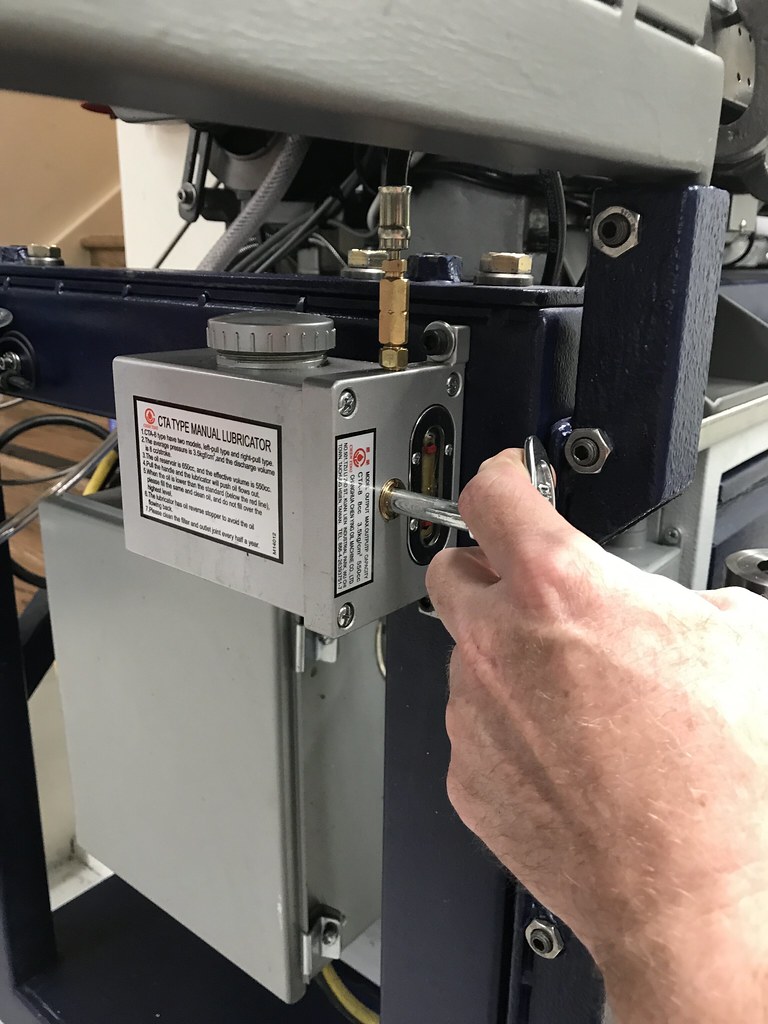A change I made to the lathe is the lubrication of the Norton gearbox. The gauze that comes from the factory is not much more than a screen that lets the oil flow through quickly and not really doing much. The first few holes got almost all of the oil. I decided to try some felt as wicks to slow the oil flow. McMaster-Carr had some round felt cord, of course not the 5mm I needed, so I bought 1/4” and 3/16” to see which would work. I made a test fixture with the wicks in the same size hole as the gearbox and let the oil flow through. It dripped through over the course of hours and I think it will work better than the fast flow rate with the gauze.
The 1/4” felt wouldn’t fit in the holes, and the 3/16” is a bit loose, so I split one end into quarters and spread it out to act as a stop so it would not fall through. I did not put a wick in the two bearing locations in the back since oil does not flow through there and needs to be drawn down as the shafts spin. I pumped a bit of oil in there, enough to cover the bottom of the chamber and let it soak. The flow rate is low enough that most of the oil stays on the gears and does not drip off as much. I will be watching this to make sure I am not starving the gears of oil, but so far it looks like it is going to work and all the gears are now getting oil instead of just the first few before.
View attachment 395988



